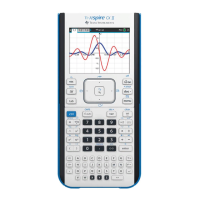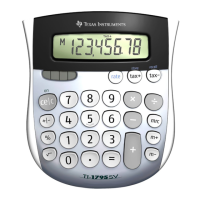dominantTerm()
Catalog >
Returns the dominant term of a power
series representation of Expr1 expanded
about Point. The dominant term is the one
whose magnitude grows most rapidly near
Var = Point. The resulting power of (Var −
Point) can have a negative and/or
fractional exponent. The coefficient of this
power can include logarithms of (Var −
Point) and other functions of Var that are
dominated by all powers of (Var − Point)
having the same exponent sign.
Point defaults to 0. Point can be ∞ or −∞,
in which cases the dominant term will be
the term having the largest exponent of
Var rather than the smallest exponent of
Var.
dominantTerm(…) returns “dominantTerm
(…)” if it is unable to determine such a
representation, such as for essential
singularities such as sin(1/z) at z=0, e−
1/z
at z=0, or e
z
at z = ∞ or −∞.
If the series or one of its derivatives has a
jump discontinuity at Point, the result is
likely to contain sub-expressions of the
form sign(…) or abs(…) for a real expansion
variable or (-1)
floor(…angle(…)…)
for a complex
expansion variable, which is one ending
with “_”. If you intend to use the dominant
term only for values on one side of Point,
then append to dominantTerm(...) the
appropriate one of “| Var > Point”, “| Var
< Point”, “| “Var ≥ Point”, or “Var ≤
Point” to obtain a simpler result.
dominantTerm() distributes over 1st-
argument lists and matrices.
dominantTerm() is useful when you want to
know the simplest possible expression that
is asymptotic to another expression as
Var→Point. dominantTerm() is also useful
when it isn’t obvious what the degree of
the first non-zero term of a series will be,
and you don’t want to iteratively guess
either interactively or by a program loop.
Alphabetical Listing 59

